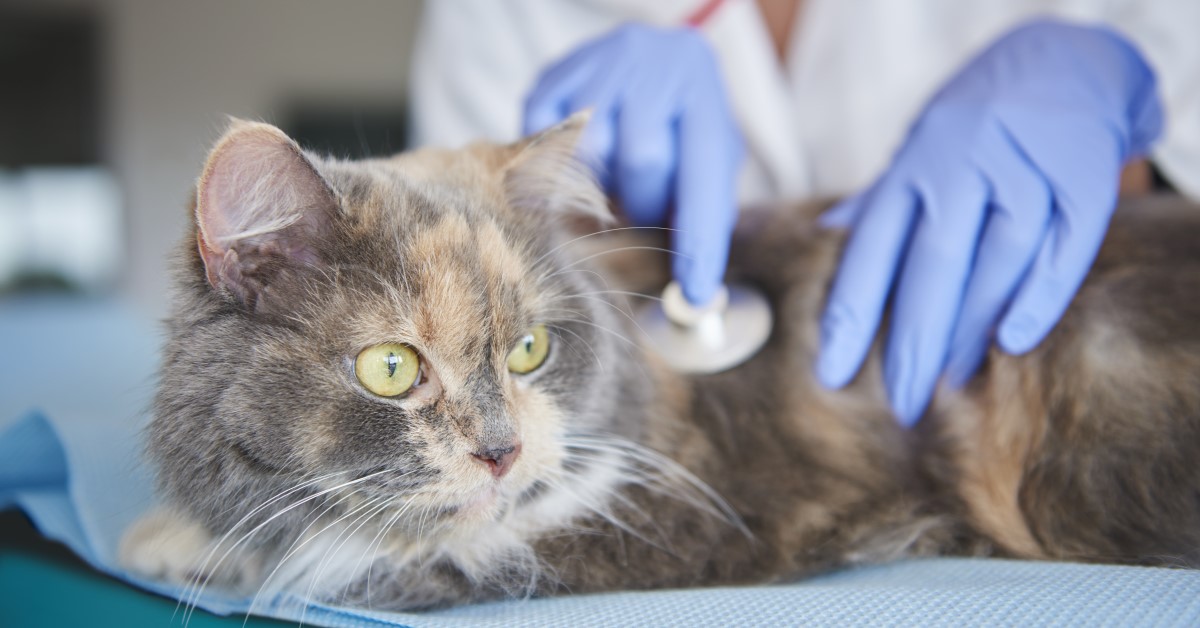Spring Into Action Against Fleas!
The best defense against fleas is to stay ahead of them!

Any pet owner who has experienced a flea infestation with their pet knows that it is a war trying to eliminate those pests. The flea is a hardy insect with a life span of six to 12 months. During that time, a pair of fleas can produce millions of offspring. Fleas are extremely durable and hearty, and have survived millions of years in a variety of environments. Fleas are quite athletic too, with some species able to leap 15 to 36 inches high. That's equivalent to a man jumping over the 555-foot Washington Monument. Pretty impressive for such a tiny creature! It's no wonder fleas can cause a variety of reactions in your pet varying from a mild skin irritation to a severe allergic reaction. Because fleas feed on blood, an extreme infestation can cause anemia or even death in animals. All cats and dogs, and other mammals, too, are susceptible to flea infestations, except for some that live in high elevations or in extremely dry environments.
Whether or not you actually see fleas on your pet, does not mean they are not there. Scratching, scabs and dark specs, or "flea dirt," found on the skin can all be signs that your pet has become the unwitting host for a family of fleas. Unfortunately, as if just having the fleas isn't enough, they can also carry tapeworms, further compounding the problem. If you notice small white rice-like things in your pet's feces or in the hair around his anus, your pet probably has tapeworms, which means he may also have fleas. In extreme cases, an animal may be lethargic and its lips and gums pale. You will usually notice these symptoms pretty easily.
To battle flea infestation requires patience and perseverance, so put on your armor and get to it! Because the life cycle of a flea is three to four weeks, it will take at least that long to completely rid your pet and its environment of the enemy. Different flea control products work in different ways, have varying levels of effectiveness and kill different flea stages (eggs, larvae and/or adults). You'll need to use a combination of products at the same time to be effective. Just tackling one stage may be ineffective and a waste of your time, so be prepared to tackle the infestation several ways.
Dips, shampoos, powders and sprays will usually kill the adult fleas on your pet. Using a flea comb regularly will help, too. But more adults may be lurking in your home or yard, and eggs or larvae may be lying in wait, as well. You'll need to rid your house of fleas by vacuuming and washing your pet's bedding once a week, and using a disinfectant on washable surfaces and an insecticide or insect growth regulator in cracks and crevices (sometimes foggers are recommended) every two to four weeks. When using chemical products to control fleas, be very careful. You may be providing too much of a potentially toxic chemical if you use, say, a flea dip and a fogger with the same chemical ingredient. Always check with your veterinarian before beginning your war on fleas. Even if you purchase an over-the-counter product, it's wise to consult your veterinarian for any safety concerns. To assist you with clearing your home of fleas, you may want to consider hiring a professional exterminator (in which case, your veterinarian may be able to recommend one in your area that he or she feels will be able to treat your home safely without harm to your pets).
Just tackling your pet and your home is not enough. If your pet is an outside pet, you'll need to tackle the yard, too. Sunlight kills fleas, so concentrate most of your efforts in the shady areas of your yard. You can spray your yard with insecticide, or you can battle fleas with their natural enemy, nematodes. Nematodes are microscopic worms that kill flea larvae and cocoons. Apply them to your yard once a month until the fleas are gone. Check with your veterinarian or your pet supply or garden stores to find out more information about the availability of nematodes in your area.
Flea control has reached new levels in recent years. Today, there are products on the market that you can treat your pet with once a month which will help keep those annoying little jumpers away. Insect growth regulators, or IGRs, are safe and act like flea hormones to interrupt the life cycle of the flea, preventing them from maturing into adult fleas. Lufenuron is one example of an IGR. It inhibits flea egg production, but doesn't kill adult fleas, so flea bites can still occur. Others, such as imidacloprid and fipronil kill adult fleas, and the latter works on ticks as well. Depending on the product used, you may be giving your pet a pill, spraying his coat or applying a liquid substance to one area of his skin; the substance will spread to cover his body. These treatments are available only from your veterinarian and are given once a month. Be very careful to use the products as directed; some may be effective for dogs, but toxic to cats. Consult with your veterinarian before implementing any flea control program.
Now that you're armored with some information, you can help
your pet win the war against fleas. Although the task of tackling
such a formidable foe sounds pretty daunting, it is possible to
get them under control and eventually eliminate them.
Ready to start saving money on pet wellness care?
Then take a look at Mint Wellness, the pet wellness plan that provides fast reimbursement on routine pet care. Save on vaccinations, wellness exams, preventatives, dental, and more!
Learn More


